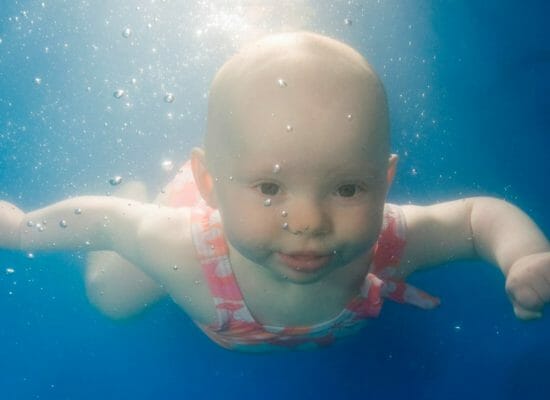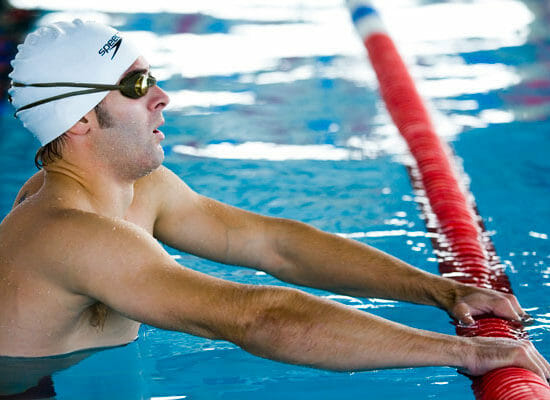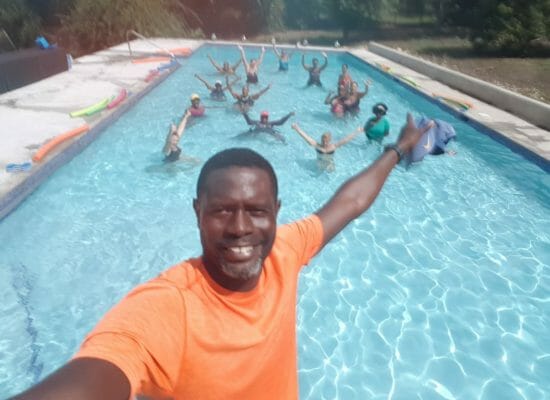
Baby Swimming
Baby swimming takes place in small groups of parent (carer) and babies. Babies can start from as young as 3 months of age and continue in this format until they are approximately 2 years of age, and able to follow simple instruction independently. At aquability, we work towards developing skills in propulsion, breath control and buoyancy, from natural response. This is done through gentle encouragement and play as we work with the babies’ responses to the nurturing stimulation. We also incorporate safety skills and confidence skills to prepare the babies for their journey along the swimming and water enjoyment pathway.
Learn To Swim
Most learn to swim lessons are run in small groups on a weekly basis. From the age of around 2 years, children can follow our programme, which runs from absolute beginners through to advanced swimmers, ready to join club swimming, artistic swimming, watersports or waterpolo. We have developed our own certificates to record the skills the children learn.
Adult learn to swim is available at any level from absolute beginner to someone wishing to improve their swim strokes or gain specific skills, overcoming fears and improving efficiency.


Children With Special Needs
We can work with children with different needs, working towards swimming skills and water skills. Lessons can be therapeutic but the focus is on learning to swim, rather than aquatic therapy. The warm water provides a relaxed environment for this.
Children are assessed in order to establish the best way to work with them, in groups, or individually and programmes are aimed at their developmental levels.
Adults With Aquaphobia
We approach swimming teaching at the individual’s pace, within the context of group or individual lessons. The warm water, shallow area of the pool and quiet surroundings give space for adults with aquaphobia to face and conquer their fears.


Aquacise / Aqua Aerobics
Aquacise, or aqua aerobics, is a form of exercise classes, which take place in water. The classes incorporate cardio vascular work, strength and conditioning, and stretching, for a full body workout. The warm water supports the body in the exercise, reducing the risk of injury through low impact and zero impact activities.